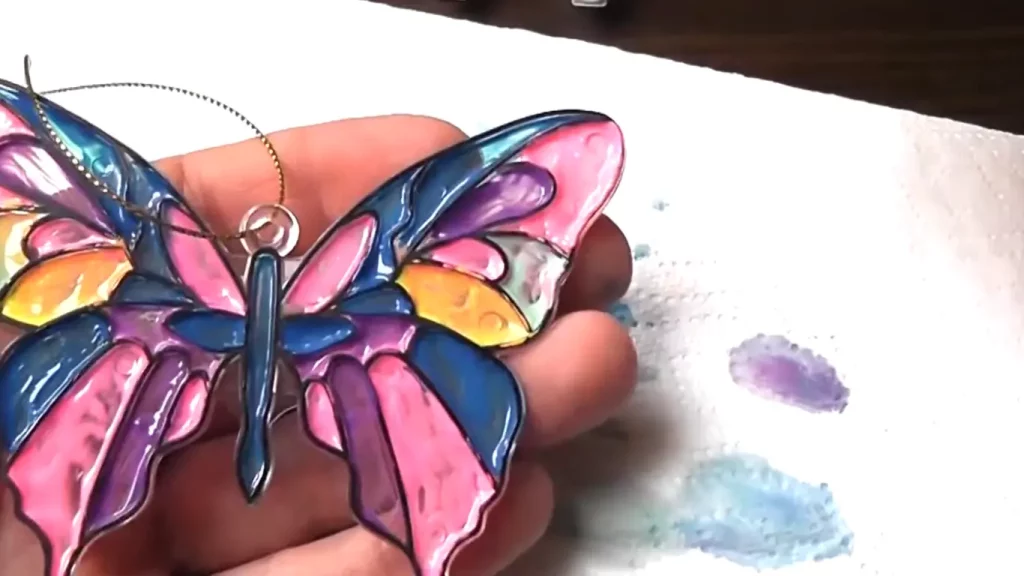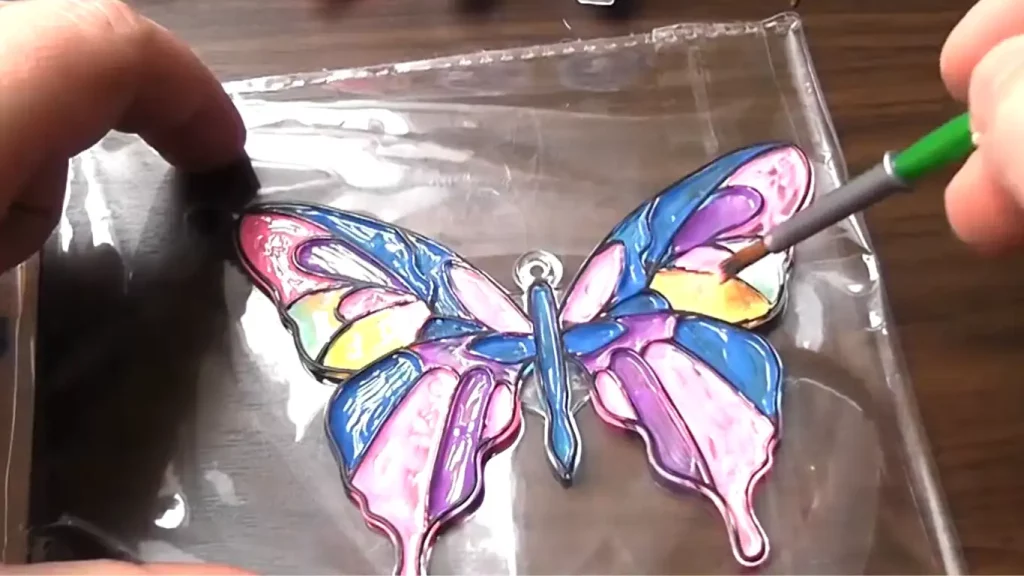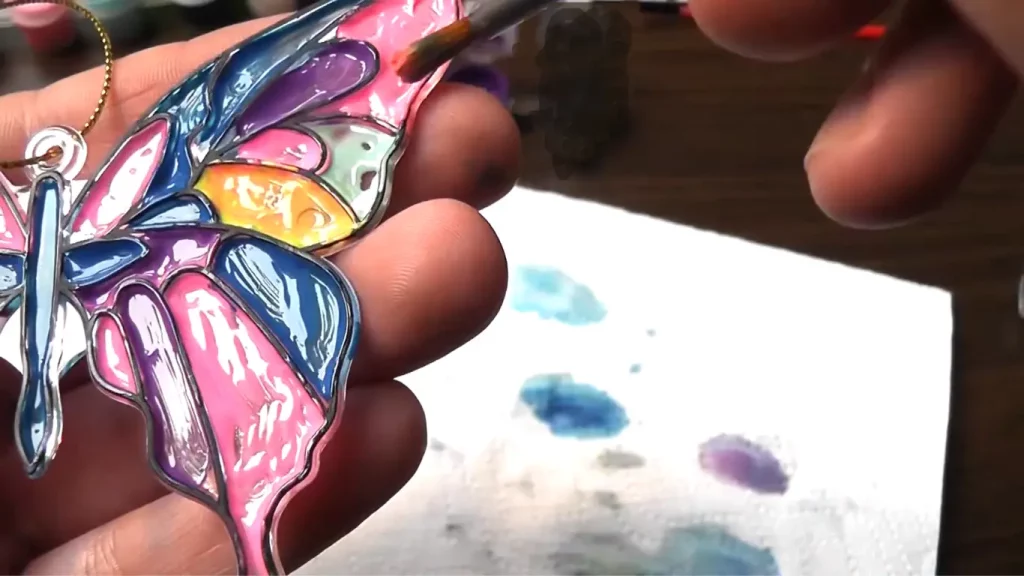Do you want to add a splash of paint to your suncatcher? If you are wondering whether you can use tempera paint on your suncatcher or not, look no further! This blog post will walk you through the answer to this question, the pros and cons of using tempera paint on a suncatcher, and what other alternative paints you can use on a suncatcher. So, grab your paintbrush and get creative.
The short answer is yes. You can use tempera paint on the suncatcher. Tempera paint comes in various colors, and you can create vibrant art pieces with this paint.

But tempera paint is not permanent. This paint is less durable than other types of paint. When the suncatcher gets direct sunlight, the paint may fade and peel off the surface. You can use a sealer to keep the paint on the surface longer. You can also make tempera paint permanent.
Tempera paint is also washable. If you keep your suncatcher outdoors or in damp places, the paint will wash off the surface. Keeping all these precautions in mind, you can use tempera paint on the suncatcher. You can also use tempera paint on other surfaces such as wood, rocks, ceramic, and walls.
Tempera Paint On Suncatcher: How to Paint?
To paint a suncatcher with tempera paint, you will need the following things:
- Suncatcher (clear plastic or glass)
- Tempera paint (Choose your desired colors)
- Brushes or sponges (Choose what you have available)
- Water (To prepare the paint)
- Paper towels or a cloth (To prepare the surface)
- A surface to work on (newspaper or a plastic sheet)
Cover the surface with old newspaper or plastic sheets to avoid any unwanted mess. Though tempera paint is washable, it is better to keep the surface mess-free. Who wants unwanted hassle, right?
First, you need to prepare the surface by washing it with warm water. Use a paper towel or dry cloth to remove any dirt or debris and dry out the surface.
After the surface is prepared, choose the paint’s color. Once you have chosen the desired paint color, prepare it by giving it the right consistency. Don’t make the paint too thin or too thick.

Take a little amount of paint in the palette. Add a few drops of water to the paint, and stir the paint with a brush. Look for the consistency of diesel or honey. If you prepare the paint well, you will get a better finish on the surface.
Take a small size brush or sponge. Apply the paint in a thin layer. Once you apply the paint on the surface, let the paint dry.
If you want to add any design to your suncatcher, you can apply different patterns by using a variety of brushstrokes or techniques such as polka dots, wavy lines, or stripes. You can use a toothpick or any fine-point tool to draw intricate patterns or designs onto the suncatcher.
You can use different colors to create a different custom shadow. You can also add any glittering elements to make the surface look more lucrative.
If you want to upgrade your design to the next level, purchase stencils or make your own by cutting shapes out of paper or cardboard. Use stencils or templates to create specific shapes or designs on the suncatcher.

After adding the design to the suncatchers, allow the paints to dry completely before hanging them.
Caring For And Displaying Painted Suncatchers
After the decoration is completed of your suncatcher, it is important to protect the paint from fading or chipping over time.
One way to protect tempera paint on the suncatcher is to keep the paint away from direct sunlight. Sunlight can cause the paint to fade or discolor over time. So it’s best to display the suncatcher in a location where the light will come indirectly or in a filtered medium. You can also use UV-protective spray or another type of protective coating to help prevent the paint from fading.
It is also important to clean and maintain your suncatcher regularly to keep it looking its best. If the suncatcher becomes dirty or smudged, gently clean it with a soft cloth. Don’t use any harsh cleaners or abrasive materials, as these can damage the paint.
Tempera paint cannot withstand water exposure, so keeping the painted surface away from water is better. You should not place the suncatcher outdoors if you paint it with tempera paint.
Finally, consider the location where you will display your painted suncatcher. Choose a location protected from direct sunlight, moisture, and other potentially damaging factors. A suncatcher displayed in a well-ventilated, dry location will be less likely to fade or become damaged over time.
Pros and Cons of Using Tempera Paint
As someone who has delved into the world of suncatcher painting, I can confidently say that tempera paint has its charms. Its wide array of vibrant colors and ease of application make it a fantastic choice for crafting eye-catching art pieces.
But, like any other medium, tempera paint has its drawbacks. I’ve experienced firsthand that it’s not permanent, and when exposed to direct sunlight for too long, the paint tends to fade and peel off. Nevertheless, I’ve found a helpful solution to tackle this issue—applying a sealer to preserve the artwork and ensure its longevity.
Alternative Paint Options of Tempera Paint for Suncatchers
Considering the drawbacks of tempera paint, you may want to choose other paint for your suncatcher. There are some paints that you can opt for if you want to avoid using tempera paint. Acrylic paints, for example, are more durable and offer a long-lasting finish. You can use this paint for your suncatchers.
Stained glass paints, on the other hand, are designed explicitly for glass surfaces and provide a translucent, stained glass effect. By considering these alternatives, you can select the paint that best suits your preferences and needs. Note that, tempera paint is cheaper than all of these paint types. So, if you want to avoid spending extra bucks, you should stick to tempera paint.
Conclusion
It is possible to use tempera paint on the suncatcher. But as tempera paint is temporary, it will fade or chip unless you follow the proper procedure to make it stay longer.
Apply the paint in thin layers, and allow the paint to dry. You can use patterns and designs to make the suncatcher more beautiful. Protect the paint from direct sunlight by displaying the suncatcher indoors and away from moisture.

S. Pushon is a paint expert, self-taught artist, and currently working as an adviser in the paint industry as a Quality Improvement and Development Assistant.
An artist by heart, he draws remarkable art pieces and as a professional paint industry individual, he seeks the insight and shares with enthusiasts. Read more…

